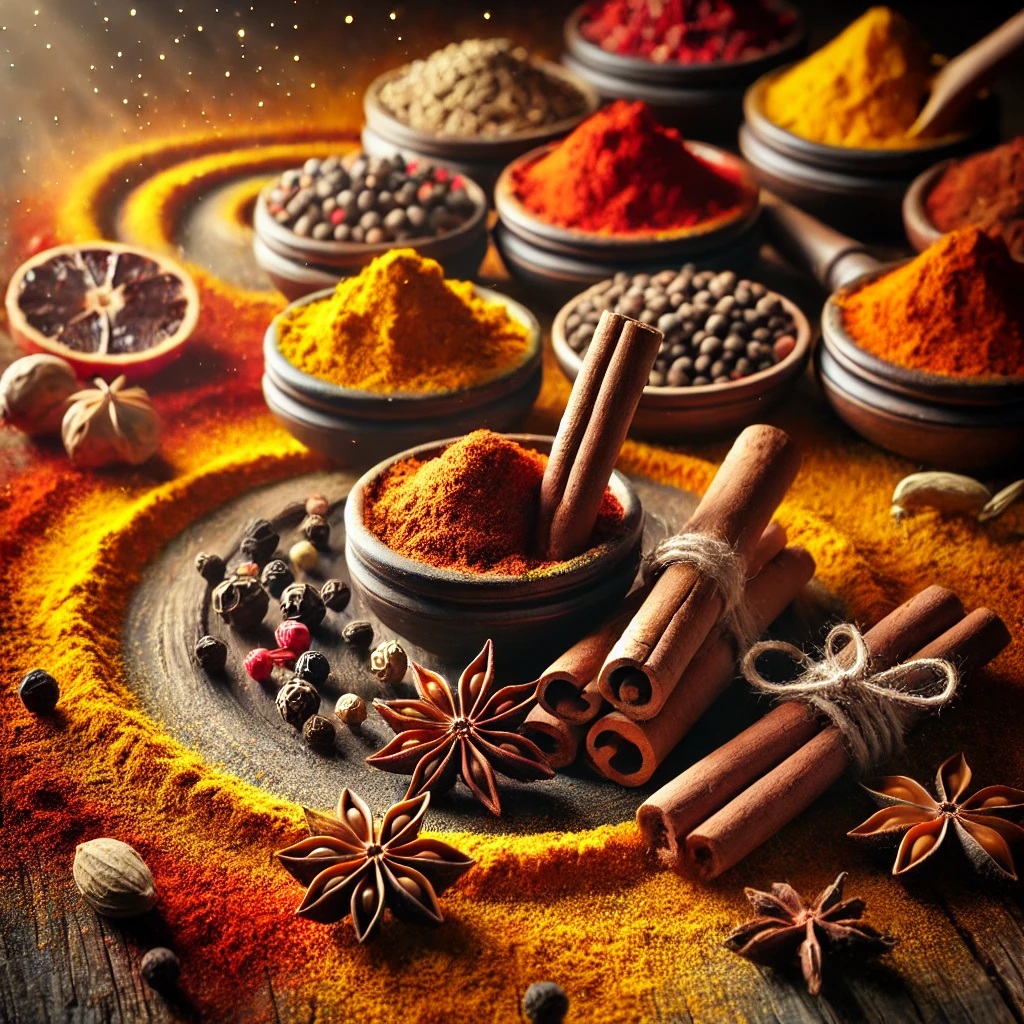Introduction
Have you ever taken a bite of your favorite dish and felt an explosion of taste in your mouth? That magical experience is flavor—a complex combination of taste, aroma, and even texture. But what exactly is flavor, and how does it work? In this deep dive, we’ll explore the science, psychology, and cultural significance of flavor, with a special focus on organic spices.
What is Flavor?
Flavor is not just about taste—it’s a multi-sensory experience influenced by taste, smell, texture, and even sound. It’s what makes food enjoyable, memorable, and crave-worthy.
The Components of Flavor
- Taste – Detected by the tongue (sweet, sour, salty, bitter, umami).
- Smell – Aroma molecules travel through the nose and enhance taste.
- Texture – The physical feel of food affects perception.
- Temperature – Hot and cold foods influence flavor intensity.
- Sound – The crunch of chips or fizz of soda impacts enjoyment.
The Role of Organic Spices in Enhancing Flavor
Organic spices are free from synthetic chemicals, offering purer, more intense flavors. These natural seasonings enhance the taste and aroma of dishes, making them more vibrant and nutritious.
Popular Organic Spices and Their Flavor Profiles
- Cinnamon – Warm, slightly sweet, and aromatic.
- Turmeric – Earthy, slightly bitter, and peppery.
- Cumin – Nutty, smoky, and rich.
- Cardamom – Sweet, citrusy, and floral.
- Ginger – Spicy, warm, and slightly sweet.
- Black Pepper – Pungent, spicy, and robust.
- Cloves – Strong, warm, and slightly bitter.
Health Benefits of Organic Spices
- Turmeric – Anti-inflammatory and rich in antioxidants.
- Ginger – Aids digestion and boosts immunity.
- Cinnamon – Helps regulate blood sugar levels.
- Black Pepper – Enhances nutrient absorption.
The Science Behind Taste
The Five Basic Tastes
- Sweet – Sugars and artificial sweeteners trigger a pleasurable response.
- Sour – Found in citrus fruits and fermented foods.
- Salty – Enhances other flavors and is essential for body function.
- Bitter – Often a warning signal for toxins, but also present in coffee and chocolate.
- Umami – The savory depth found in meats, cheeses, and mushrooms.
How Taste Works
- Taste buds on the tongue contain receptors that detect different flavors.
- These receptors transmit signals to the brain, where they are processed and perceived as sensations.
- Smell plays a significant role—without it, flavor is dulled.
The Role of Aroma in Flavor Perception
- Olfactory receptors in the nose detect thousands of scent molecules.
- Aroma contributes up to 80% of perceived flavor.
- This is why a stuffy nose can make food taste bland.
How Texture Affects Flavor
- Creaminess in ice cream enhances the perception of sweetness.
- Crispiness in fried foods adds to the pleasure of eating.
- Chewiness in steak affects how flavors are released.
The Psychology of Flavor
Why We Crave Certain Flavors
- Biological needs – Craving salt can indicate dehydration.
- Emotional connections – Comfort foods trigger nostalgia.
- Cultural exposure – Early exposure to spices and herbs shapes preferences.
The Influence of Memory on Taste
- Our brain associates flavors with experiences.
- A childhood dish can evoke strong emotional reactions.
- Marketing and branding also shape how we perceive flavors.
Cultural Differences in Flavor Preferences
- Asia – Emphasis on umami-rich soy sauce and fermented foods.
- Latin America – Spicy and citrus-infused flavors dominate.
- Europe – Rich, creamy, and savory profiles in cheese and sauces.
- Middle East – Heavily spiced dishes with cinnamon, cumin, and saffron.
The Future of Flavor: Trends and Innovations
Organic and Sustainable Flavor Enhancements
- Ethical sourcing of organic spices for richer taste.
- Fermentation techniques to mimic complex tastes.
Technology and Artificial Intelligence in Flavor Creation
- AI-driven flavor mapping predicts popular taste combinations.
- Molecular gastronomy experiments with flavor manipulation.
Personalized Flavor Experiences
- Customization of food based on genetic taste preferences.
- Augmented reality (AR) experiences to simulate flavors.
Conclusion
Flavor is an intricate mix of science, psychology, and culture. It defines how we experience food, triggers emotions, and connects us to traditions worldwide. Incorporating organic spices into our diets not only enhances taste but also boosts health benefits. Understanding the elements of flavor can deepen our appreciation of food and even enhance the way we eat. Next time you take a bite, savor the moment—because flavor is more than just taste, it’s a full-body experience
